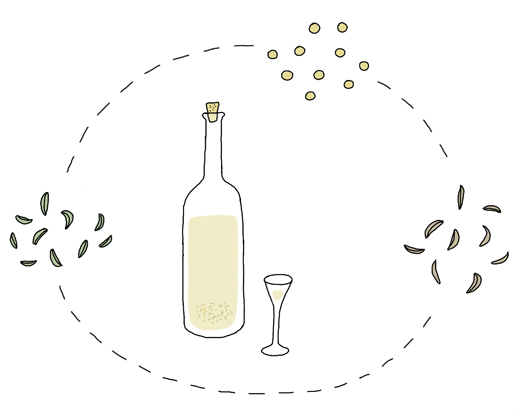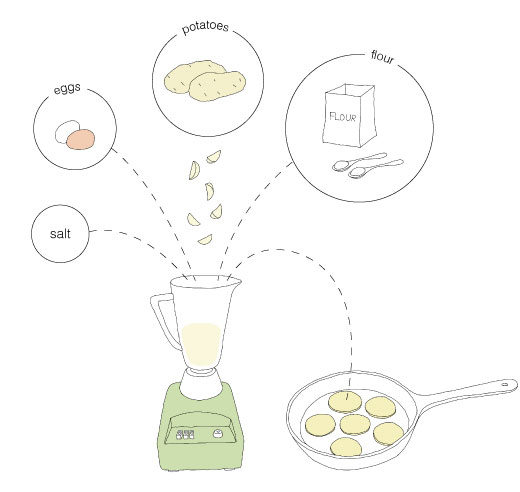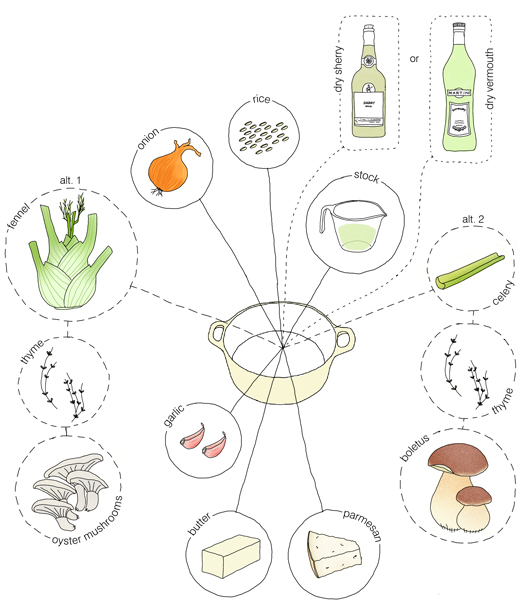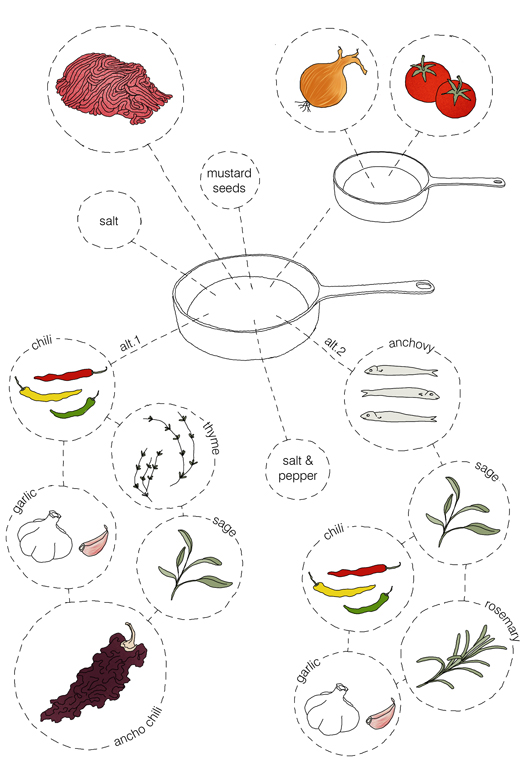A couple of weeks ago I was asked to do some recipe articles for EcoSalon. As the site belongs to one of my favorite sites I was beyond thrilled. EcoSalon has several interesting food columns, such as Foodie Underground by Anna Brones and The Green Plate by Vanessa Barrington. (BTW Anna Brones is also the woman behind the guest post Semlor for Fat Tuesday Tuesday that was posted earlier this year here on Kokblog). The site also has articles on fashion, culture, design and sex. EcoSalon, as the name shows, is about ecology and green.
My first article is about Apples in New York City followed by the recipe: Caramelized Apple Tart (see below). Read the whole story here.
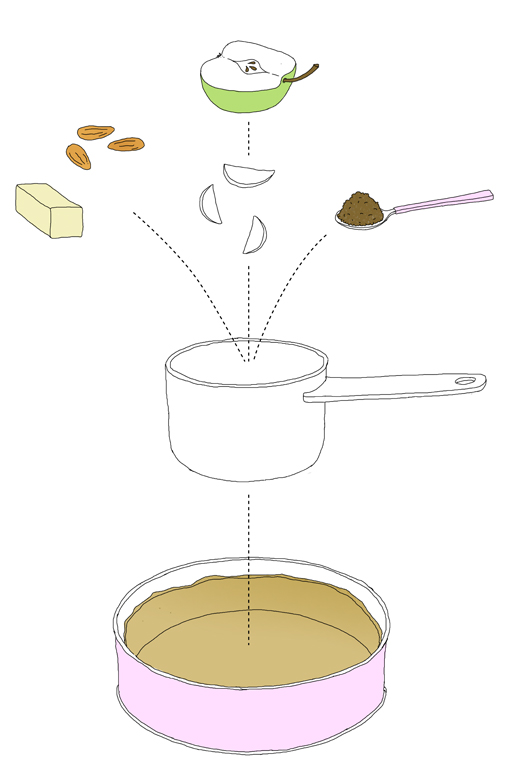
Caramelized Apple Tart
4-6 people
dough
1 ¼ cup (about 300 ml) regular flour
3.5 ounces (about 100 grams) butter
3 tablespoons sucanat*
1½ teaspoons finely crushed cardamom
splash of water
filling
4 apples (preferably apples that are sour + firm inside, ex. Granny Smith)
4-5 tablespoons sucanat* (depending on how sour the apples are)
juice from one lemon
2½ ounces (70 grams) butter
½ cup (100 ml ) almonds, toasted and chopped
heavy cream, whipped with a little sugar
Start by mixing together butter, flour, cardamom and sucanat. When the butter is well divided add a splash of water. Work the dough together and let it rest in the fridge for at least one hour. Line a greased 9 inch (about 23 cm) spring form. Pre-bake at 400°F (200°C) the pie shell for about 10-15 minutes until it has got some color. Let cool.
Wash and peel the apples. Cut in half, take out the seeds and slice the rest of the apple in thin slices. Sprinkle the slices with sucanat and lemon juice. Cook over medium heat in a frying pan until they start to get juicy. Add ½ of the butter. Keep cooking the apples until they starts to caramelize. If you think the apples need more sugar you may add some now and let cook for a little bit more. The color should be golden and have some brown spots. Remove from heat and add the rest of the butter and toasted almonds. Let cool a little before arranging the apples inside the baked pie shell. Bake at 450°F (230C) for about 15 minutes until the apples have gotten some nice color. Serve with whipped cream.
*Sucanat is a brown sugar extracted from sugar cane. It’s perfect to bake with and gives cakes and cookies a richer taste. In the U.S. you can often find Sucanat in organic shops. If you can’t find sucanat you may use muscovado sugar or even regular brown sugar instead. When I’m in Sweden I use Farin sugar which works really well too.

